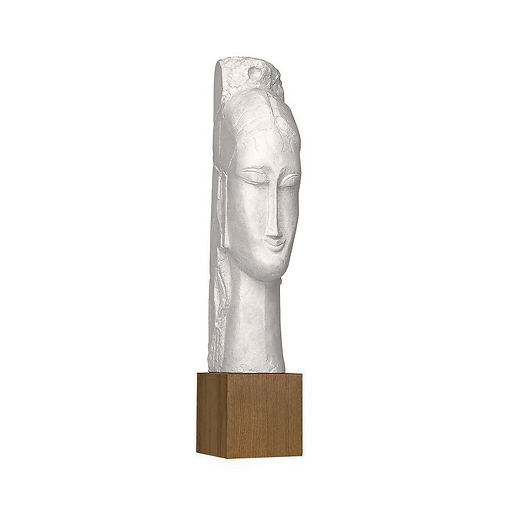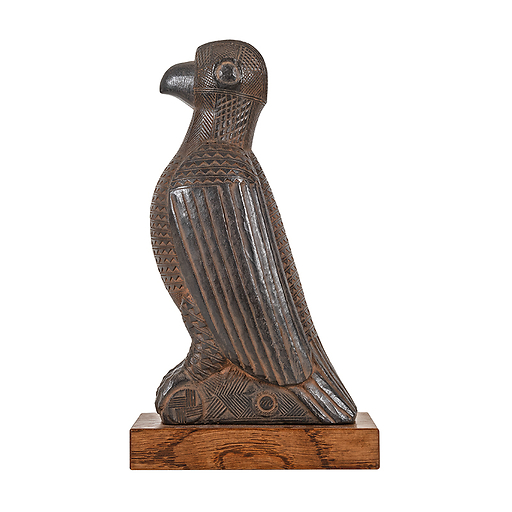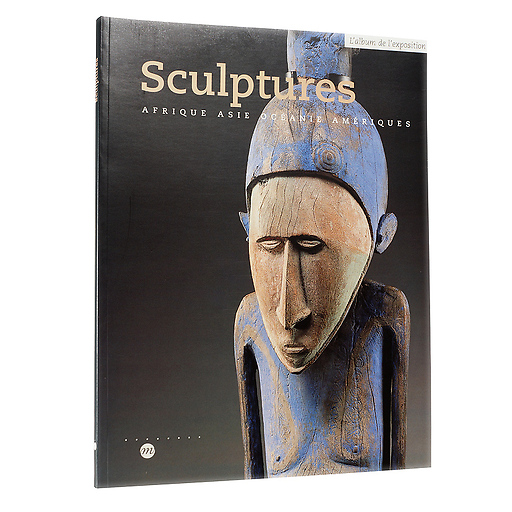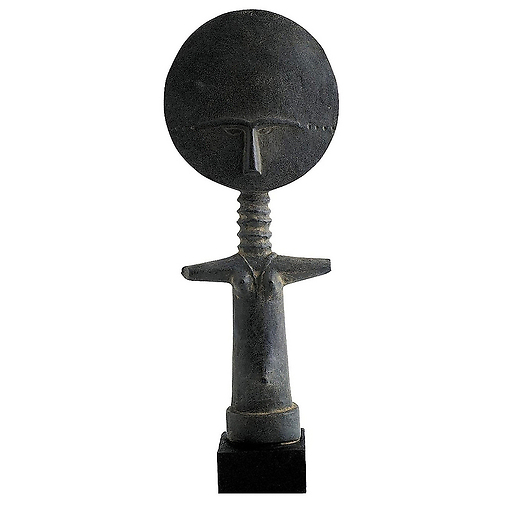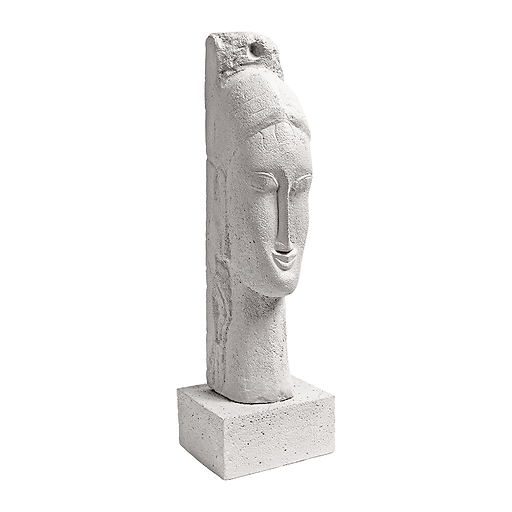Hand patinated reproduction on a black wooden base. Mold made from a print of the original work.
The Bambara (or Bamana) belong to the Mande language group. They are the heirs of the great Empire of Mali (11th to 15th centuries) and the two later kingdoms of Segu and Kaarta.
This farming tribe has...
Read more
Hand patinated reproduction on a black wooden base. Mold made from a print of the original work.
The Bambara (or Bamana) belong to the Mande language group. They are the heirs of the great Empire of Mali (11th to 15th centuries) and the two later kingdoms of Segu and Kaarta.
This farming tribe has developed an original culture in which music, theatre (koteba) and dance play an important role.
Originally fixed to a wicker cap, this sculpture is a headdress that is used in the agricultural rites of the Bambara, organized by a society of initiates called Chi Wara, "champion of cultivation". This figure is a combination of three animals that inhabit the bush: the antelope, the pangolin and the anteater.Each of these animals evokes an episode of the founding myth of the Bambara farmers.
Close







